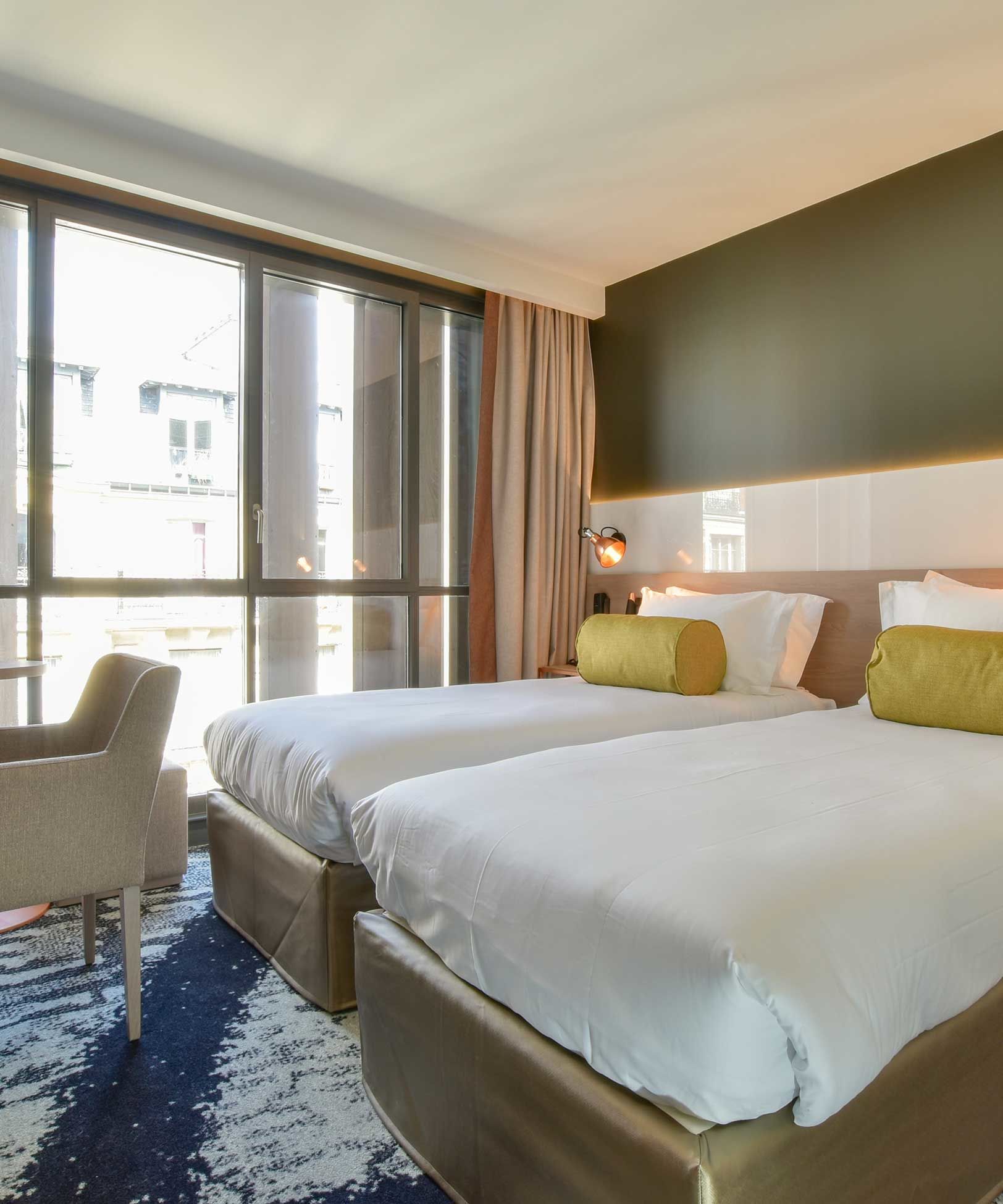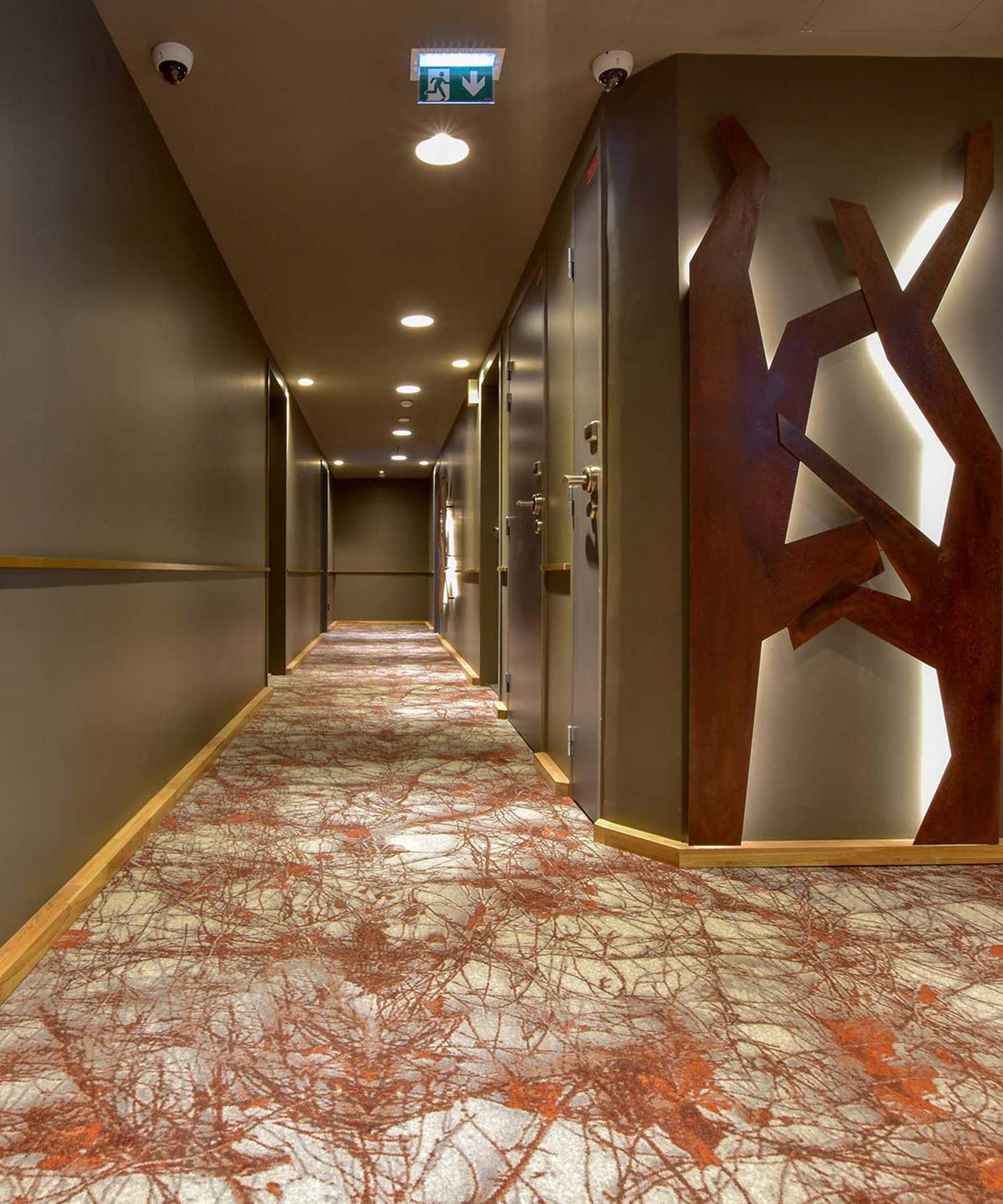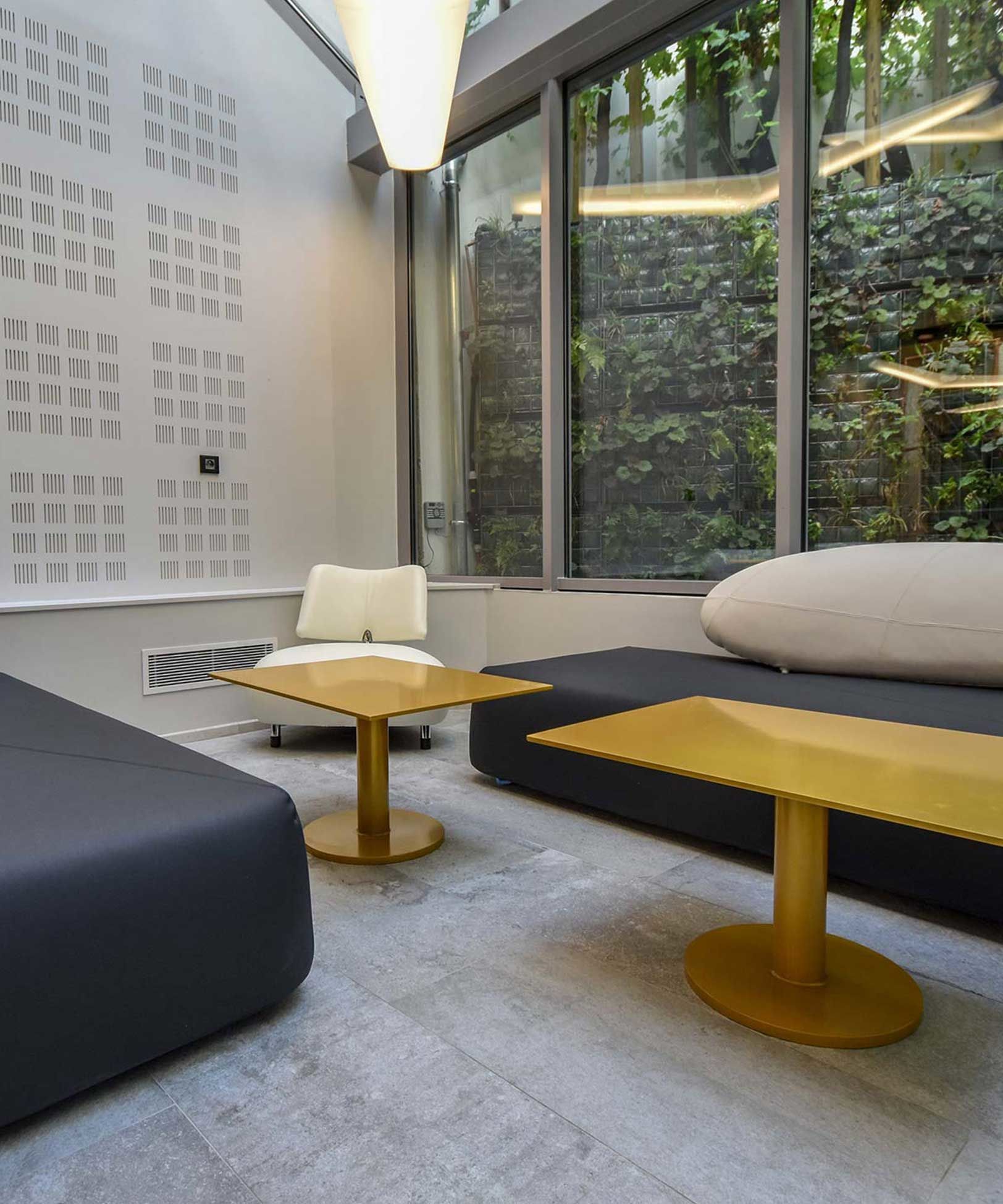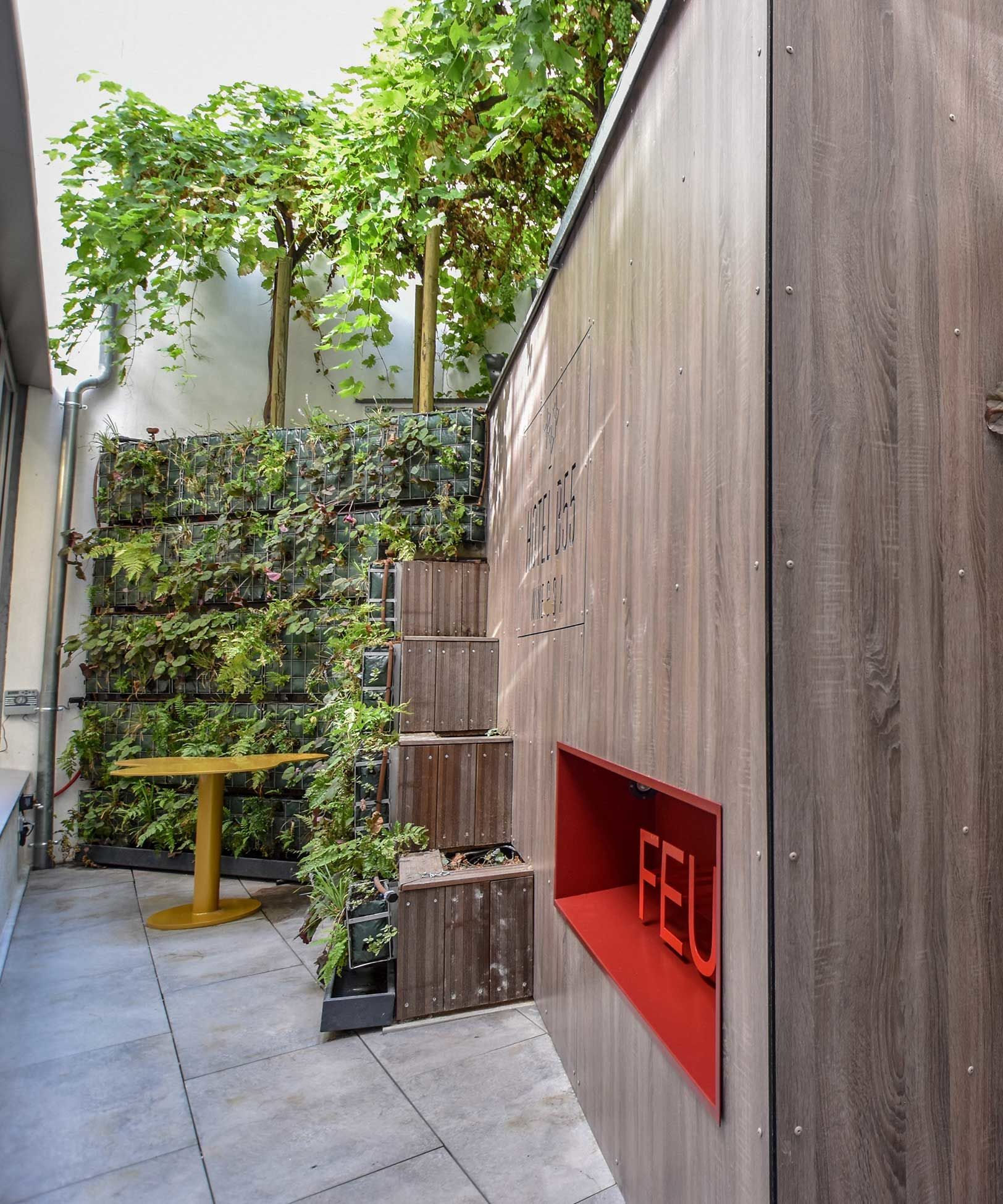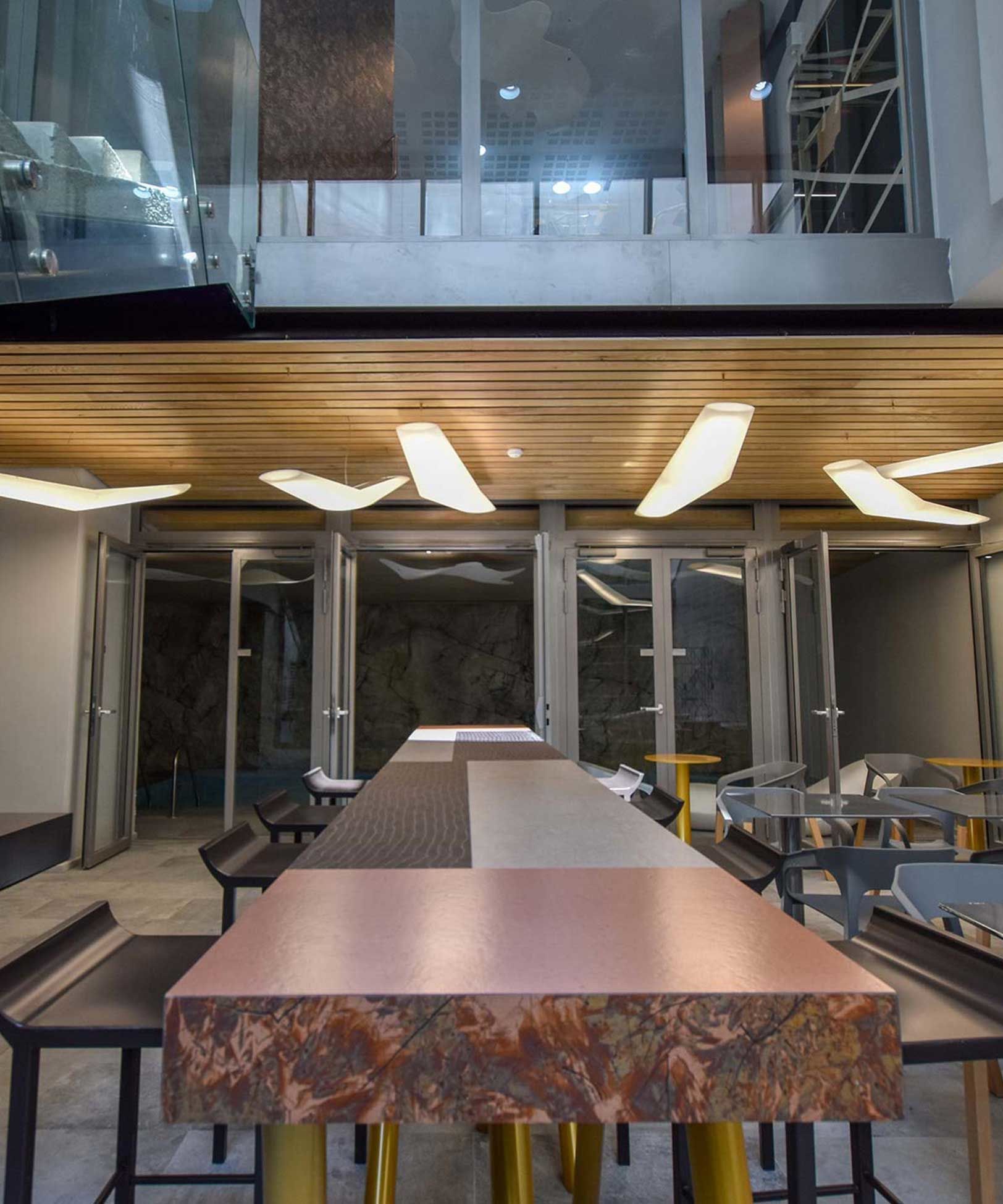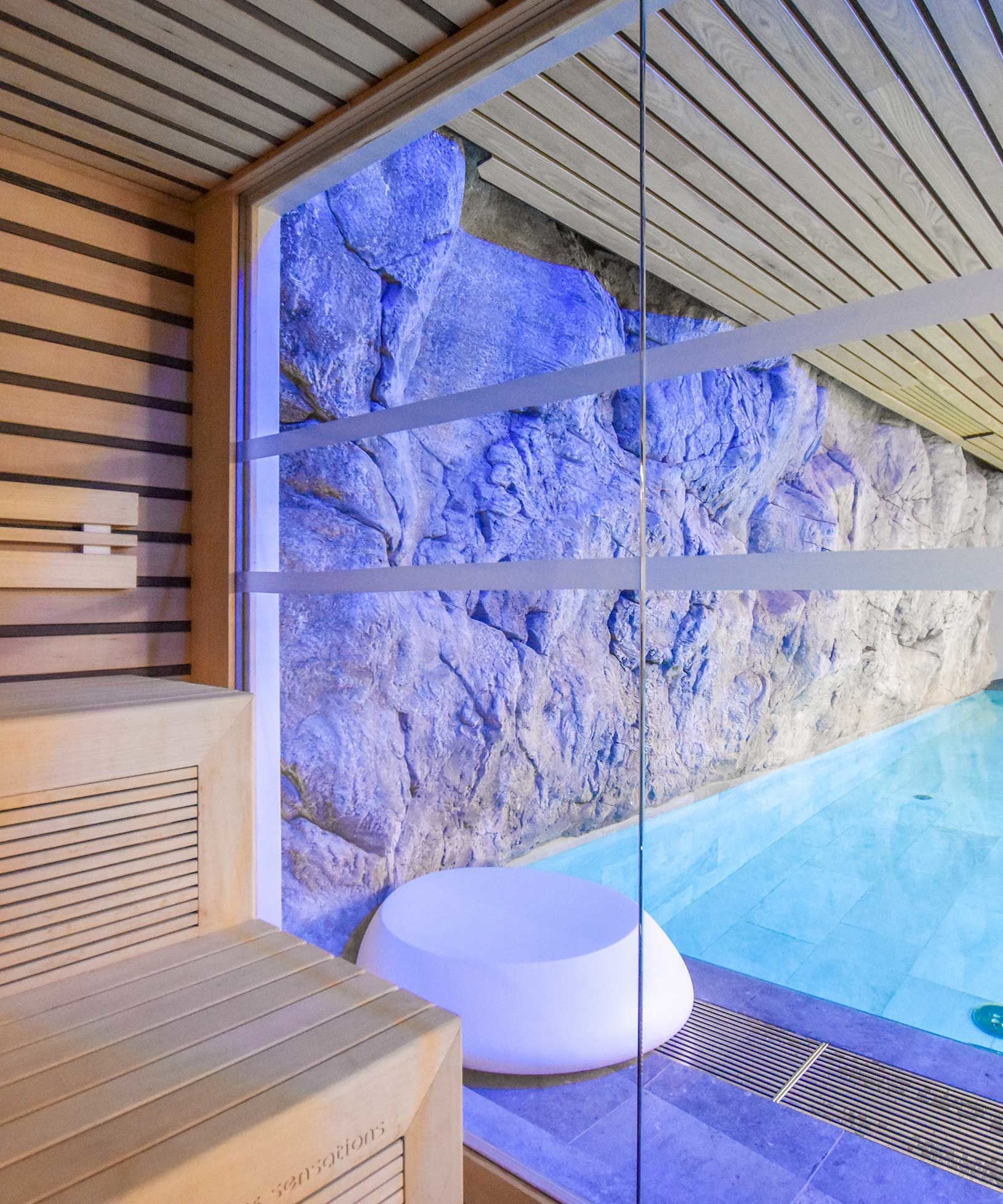Stroll in Paris 13 near our hotel
For a long time occupied by meadows, woods, and numerous mills, the 13th arrondissement of Paris was then the center of Parisian factories, before becoming this picturesque district where it is so good to walk. Let’s go for a walk in Paris 13, near the B55 hotel.
The tapestries of the Gobelins manufacture
Dating from 1601, the factory was built on the initiative of King Henry IV to respond to the rise of Flemish tapestry. The royal orders are then numerous, in France as abroad, and the activity of the weavers of the manufacture has never ceased since.
In 1662, Colbert, minister of Louis XIV, decided to bring together all the Parisian weaving workshops in the Gobelins factory, now famous throughout the world.
It is now 4 centuries that tapestries are made there for the greatest French palaces. Attached to the Mobilier national, the Gobelins factory is still successful and famous, and visitors can come and discover the history of this historic building and the work of the weavers.
Good to know: “Gobelin” was the surname of a powerful family of dyers in Paris.
The White Queen’s Islet
Did you know that the 13th arrondissement of Paris was crossed by a river? The Bièvre, which meanders for more than 5 km through the district, used to give rhythm to the architecture and life of Parisians. Surprisingly, the river has not dried up today, and it continues to flow under our feet, hidden under a concrete floor since 1912.
In 1290, on the banks of this charming Bièvre, Marguerite de Provence, the widow of Saint-Louis, came to live. Dressed in the traditional white mourning dress, she gave her name to the small island where her residence was located. Destroyed since the 15th century, the hotel was replaced by manufacturing buildings, at the initiative of the Gobelin family.
The Hotel de la Reine Blanche was then put to many uses, always reminding us of the industrial image of the district: tile factory, tannery, dye factory and brewery followed one another.
Today, the building, classified as a historical monument, can be visited and allows to discover the history of the district.
René Le Gall Square
After long hours walking the streets of Paris, it is sometimes very pleasant to find a quiet space where you can sit and relax. The square René Le Gall is one of these little bubbles of fresh air in the heart of Paris. It is a typical 1930’s country setting, where the 4 gazebos (small kiosks) form a square in the center of which stands an obelisk. Also called the Gobelins garden, the square also has a magnificent rose garden which makes all the charm of the small park.
Sitting on one of the benches, you will be, without knowing it, in the center of an old island located between two arms of the Bièvre: the Ile aux Singes. Formerly a vegetable garden for the workers of the Gobelins factory, this island was a place of celebration, where wine was not taxed. So, to amuse the workers who were having a good time, the entertainers let their monkeys roam free, which very quickly gave the name of Ile aux Singes to this small Parisian island.
After the Bièvre River was buried, the square served for a long time as a dependency of the Manufacture des Gobelins and the Mobilier National, before being transformed into a neoclassical park by the architect Jean-Charles Moreux.
The street of Butte-aux-Cailles
A former neighborhood on the banks of the Bièvre, the Butte-aux-Cailles is one of the few neighborhoods preserved from the great Haussmannian changes. In the main street of this historical district of the 13th arrondissement of Paris, one finds a picturesque village atmosphere that makes you want to stroll around and stop for a while.
Take a trip to Les Abeilles, and stock up on products made by local bees (honey, gingerbread, candy, soap…). Enjoy a tea, a hot chocolate, a small cup of coffee and a pastry at the Oisive Thé, and participate in a knitting café. Or take a stroll down the shopping street where restaurants, bars and boutiques make the street lively.
The Butte-aux-Cailles swimming pool
Beyond the Bièvre River, the underground passages of the Butte-aux-Cailles also hide a water table that is several thousand years old. If it allows to feed the wells of the district, and in particular the artesian well, it also feeds one of the two swimming pools of the district. Classified as a historical monument, the Butte-aux-Cailles swimming pool was built in 1924 and is still in use today. If its Art Deco architecture is worth the detour, its pool heated to 28°C all year round is also a great argument for an unusual moment of relaxation in Paris.
The picturesque streets of the Butte-aux-Cailles district
With its fragile underground quarries, the Butte-aux-Cailles district was not transformed by Baron Haussmann, judging the project too dangerous. Thanks to this, we can enjoy today a picturesque district preserved by time and modernity.
Like a small village in the heart of the capital, the Butte-aux-Cailles seduces with its small paved streets and its pretty colored houses. Along the streets, we find flowered gardens, old artists’ studios and small individual houses decorated with mosaics and bricks.
The Little Belt
In the past, the Petite Ceinture was a railway line that went around the capital. Today, you can find remnants of it covered with flowers in many arrondissements (16th, 14th, 18th…). Since 2016, a small section of the Petite Ceinture is accessible to the public in the 13th arrondissement, between the Square des Peupliers, the Charles Trenet garden, and the Moulin de la Pointe garden.
The Floral City
If the dense architecture and the Parisian crowd become too overwhelming, go to the Cité Florale. This district, built in 1928 near the Montsouris park, includes 6 alleys with small houses full of flowers. As you wander through the streets, each named after a flower, the neighborhood offers you a bubble of softness, color and tenderness, in a picturesque micro-neighborhood that seems cut off from the rest of the world.
To get there, take the rue Brillat-Savarin, from the place de Rungis.
The Daviel villa and the Petite Alsace
Let’s finish our walk in Paris 13 at the Petite Alsace, where small pavilions built in 1912 are composed of half-timbered houses typical of workers’ housing at the time. Each house could then accommodate up to 12 people.
Not far from Little Alsace, Little Russia is also worth a visit, although it is rarely open to the public. It was so called because many Russians lived there.
Opposite, the Villa Daviel is not a house, but a charming and quiet street where small houses, gardens and pavilions are aligned with harmony and coquetry on 113 meters long. Initially built for the poor, the dwellings of the Villa Daviel are today inhabited by middle-class people who appreciate the picturesque charm of the street.
The B55 hotel is ideally located in the 13th arrondissement. It is the ideal place to discover all the wonders of this picturesque district of Paris, while enjoying a charming hotel room and a spa and wellness area.-

